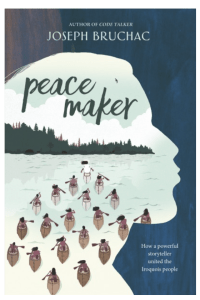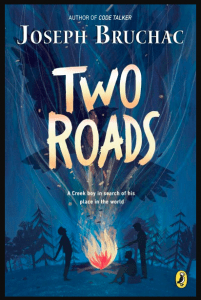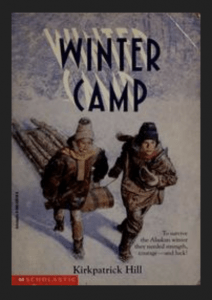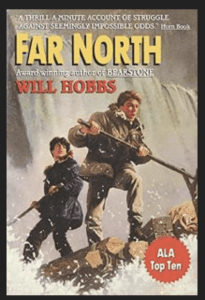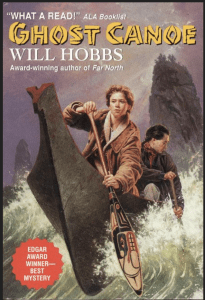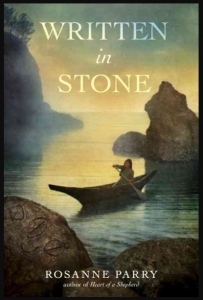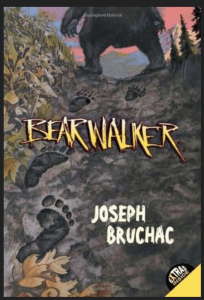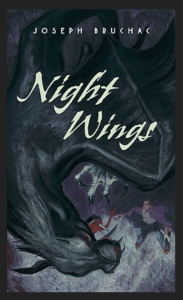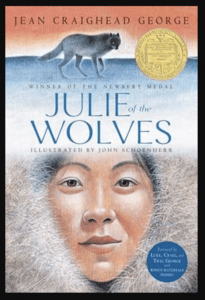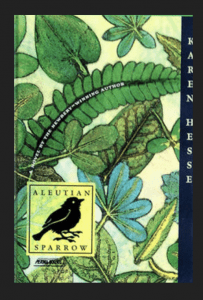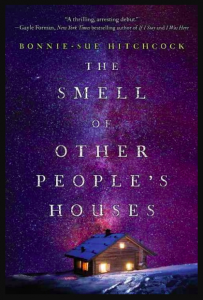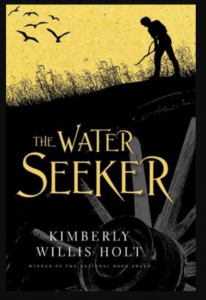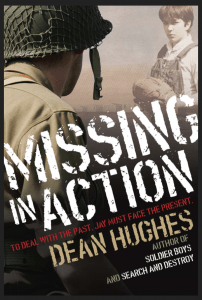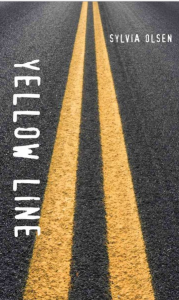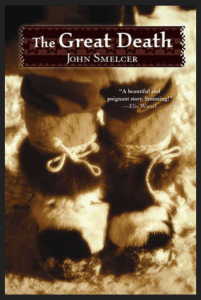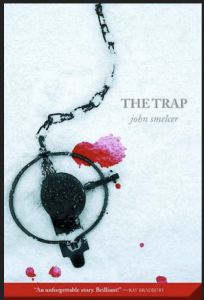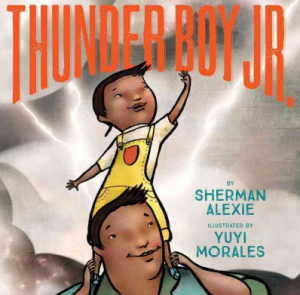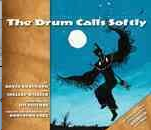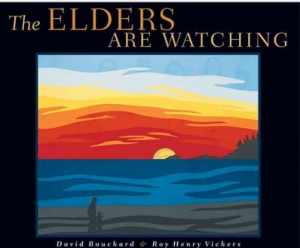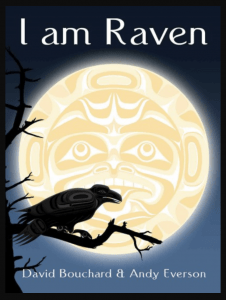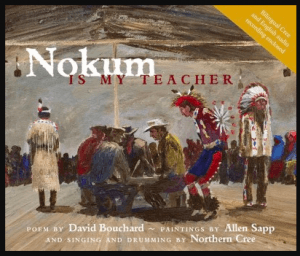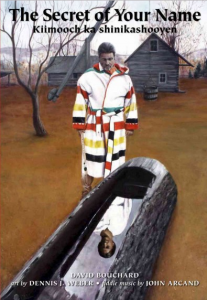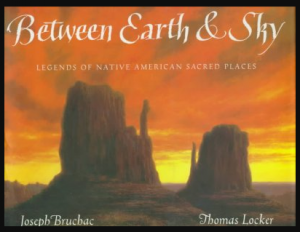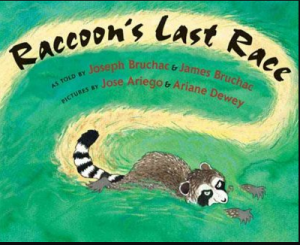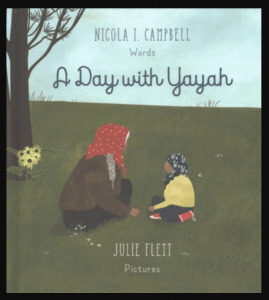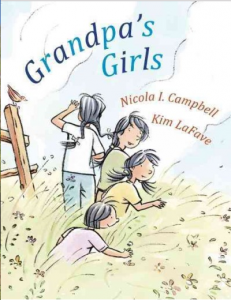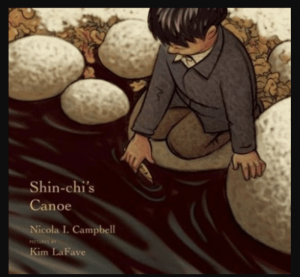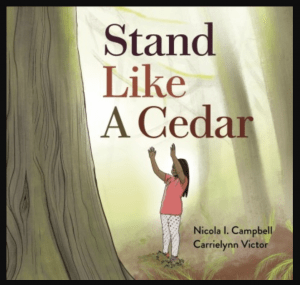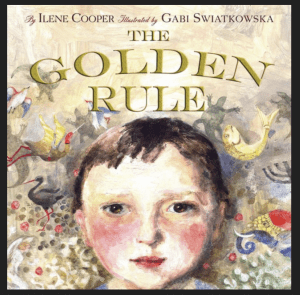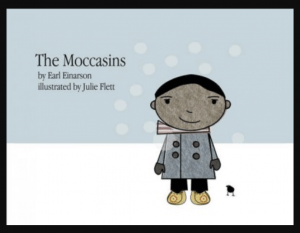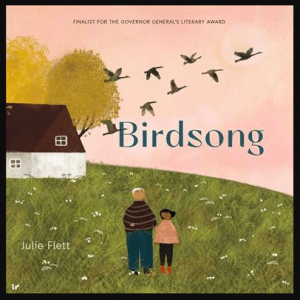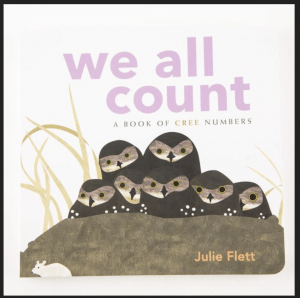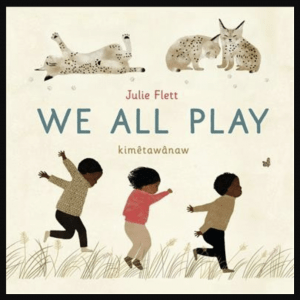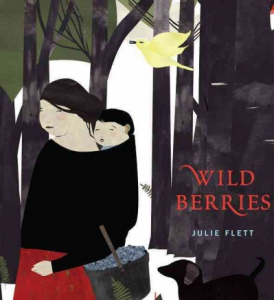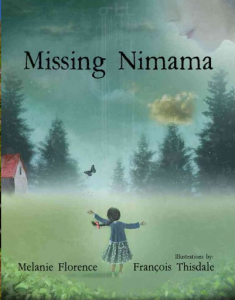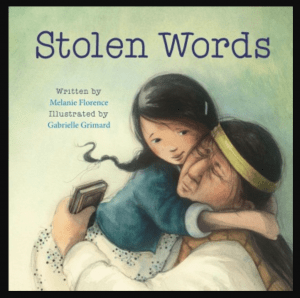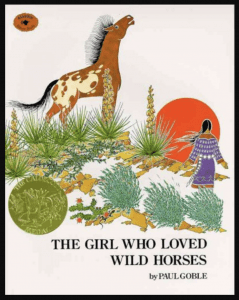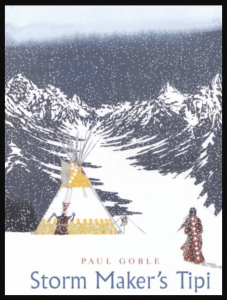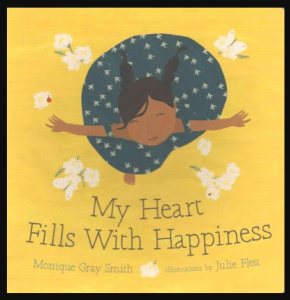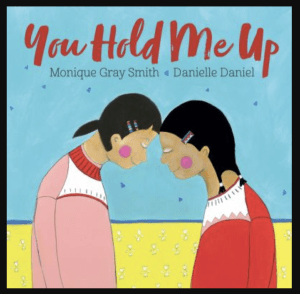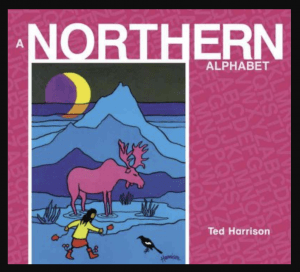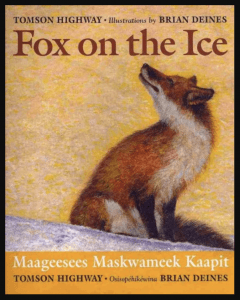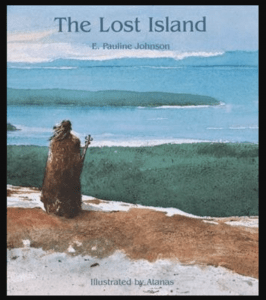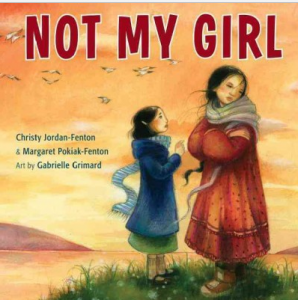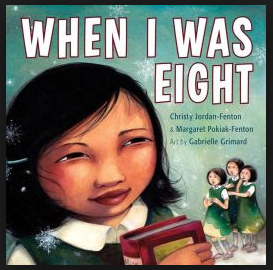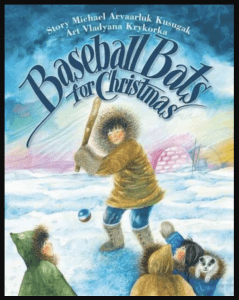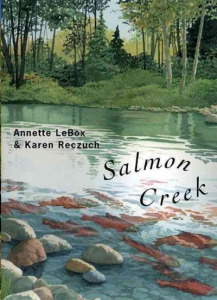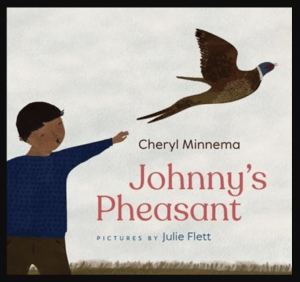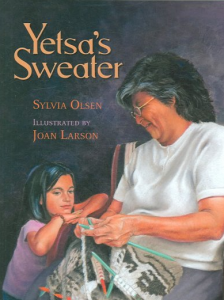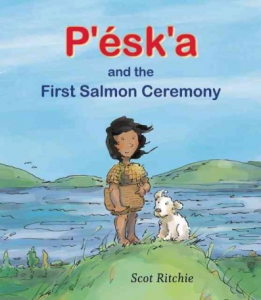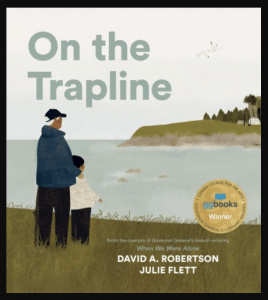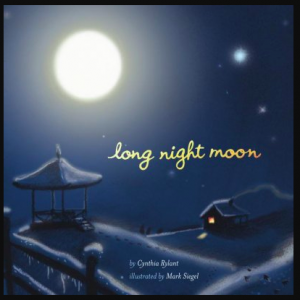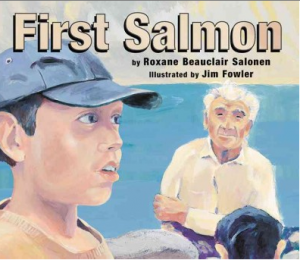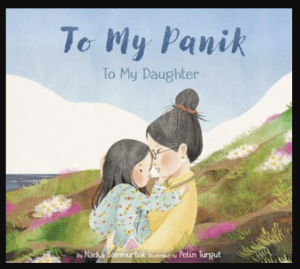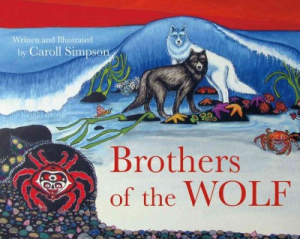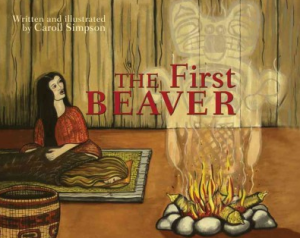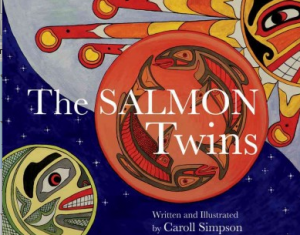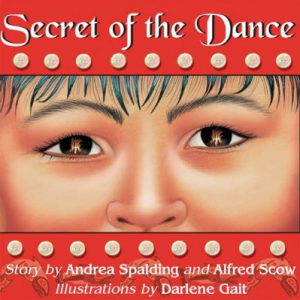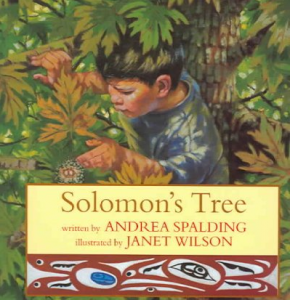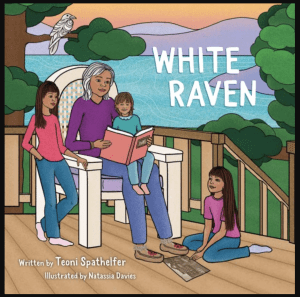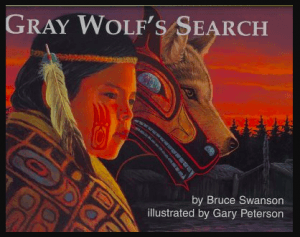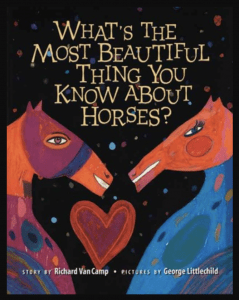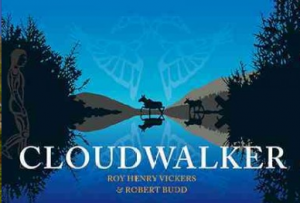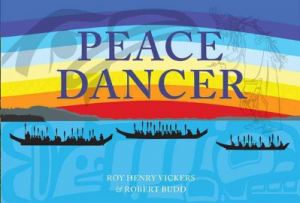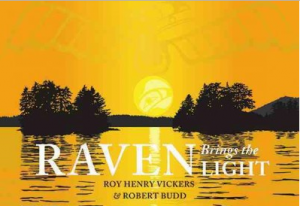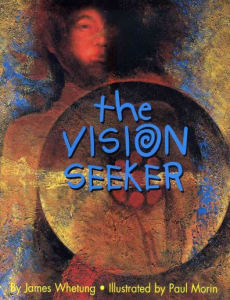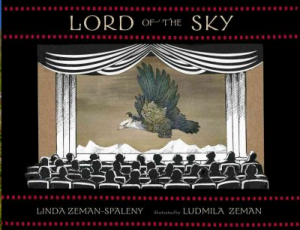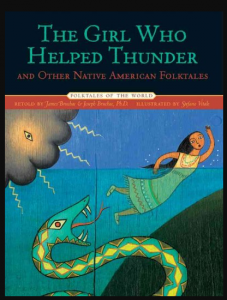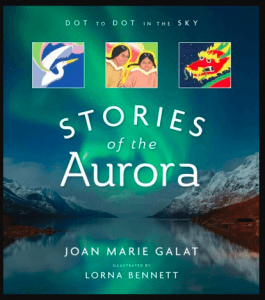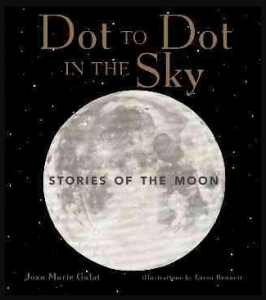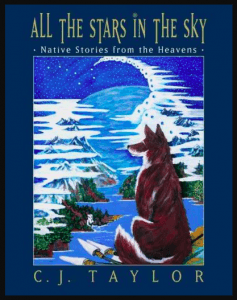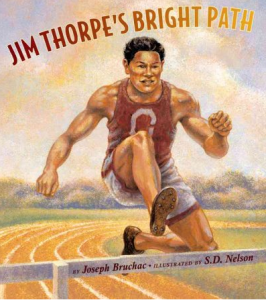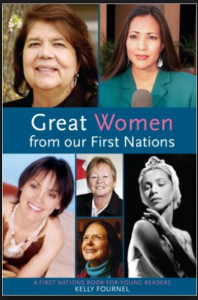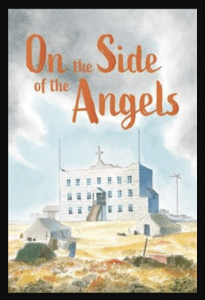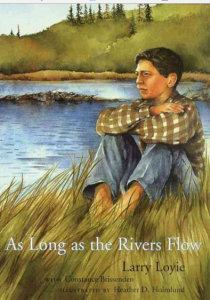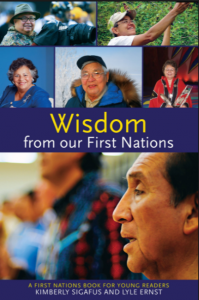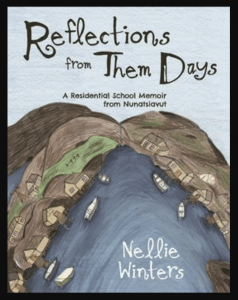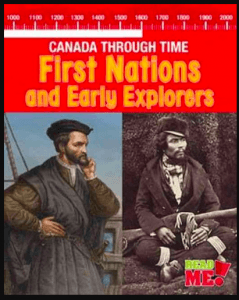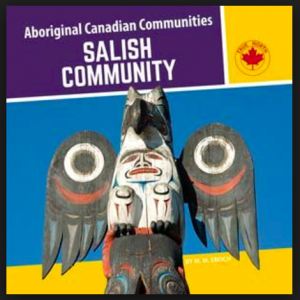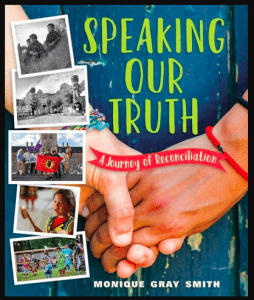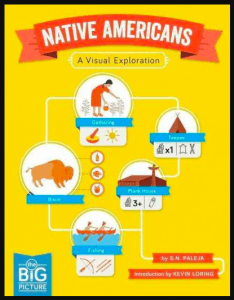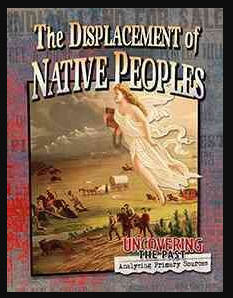Looking for a story about the indigenous people of North America?
Here are some you might like to try!
(* = my favourites)
NOVELS SUITABLE FOR CLASS SETS
* Bruchac, Joseph. Peacemaker. New York: Dial Books for Young Readers, 2021.
Can you think of someone sent by the Creator to bring peace? Can you think of someone sent in advance to tell of this peacemaker’s imminent arrival? Bruchac tells the story of how – hundreds of years ago – five tribes south of Lake Ontario agreed to stop fighting and form the Iroquois Great League of Peace. Told from the point of view of a twelve-year-old boy whose friend has been kidnapped by a neighbouring nation, this 152-page novel will appeal to both competent and reluctant readers 10 to 14 years old who enjoy action-filled stories. It will also intrigue adults unacquainted with the history of the Haudenosaunee Nations. Most highly recommended.
* Bruchac, Joseph. Two Roads. New York: Puffin Books, 2019.
Twelve-year-old Cal and his father, homeless, travel across America by rail. It’s 1932, in the middle of the Great Depression, and countless poverty-stricken men are clambering onto freight trains, hoping not to be caught by the guards. But Cal is caught – by a surprise. His father tells him that they are Creek Indians. And now he is going to join a demonstration in Washington, D.C. to defend the rights of World War I veterans, so Cal is being dropped off in Oklahoma to stay at a residential school for native Americans. Joseph Bruchac, author of numerous novels and picture books, skilfully tells a story of grief and hope recommended for readers 11 years old and up. Note: All books published by Puffin are well-written. All stories by Joseph Bruchac are worth reading.
* Hill, Kirkpatrick. Toughboy and Sister. Aladdin Paperbacks, 1990.
Ten-year-old Toughboy and his younger sister try to survive a summer at a remote fishing cabin on the Yukon River after their father dies. Note that there is some profanity.
* Hill, Kirkpatrick. Winter Camp. Puffin Books. 1993.
Eleven-year-old Toughboy and his younger sister must survive the harsh Alaskan winter at a friend’s winter trapping camp after their parents die.
Hobbs, Will. Far North. An Avon Camelot Book, 1996.
After their floatplane is destroyed, sixteen-year-old Gabe and his Dene friend, Raymond, try to survive a winter in the wilderness of the Northwest Territories. On ERAC recommended novel list for grades 7 and 8.
* Hobbs, Will. Ghost Canoe. Avon Books, 1997.
Fourteen-year-old Nathan finds a clue to a mystery about a Spanish treasure while fishing with the Makah in the Pacific Northwest.
* Mikaelsen, Ben. Touching Spirit Bear. HarperCollins, 2001.
After his anger erupts into violence, Cole, in order to avoid going to prison, agrees to participate in a sentencing alternative based on the native American Circle Justice, and he is sent to a remote Alaskan Island where an encounter with a huge Spirit Bear changes his life. On ERAC recommended novel list for grades 6-8.
**Parry, Rosanne. Written in Stone. New York: Random House, 2013.
A grandmother recalls her youth in the 1920s. Her tribe, the Makah on the Olympic Peninsula in Washington State, struggles to survive after her father dies and outsiders threaten her people’s way of life. This engrossing 175-page story – told from the first person point of view – is accompanied by a map, a glossary, an extensive author’s note explaining historical details, and a list of resources. The relatively large font makes the book inviting for competent readers as young as 10 years old. The quality of the writing and depth of historical information make this a compelling novel for readers of any age. Highly recommended! [Historical fiction; Orphans; Washington State]
Walters, Eric. The War of the Eagles. Orca, 1998.
Jed and his Tsimshian mother move back to Prince Rupert when his English father serves as a fighter pilot overseas during WWII. But when his friend, Tadashi, is evacuated along with all the other Japanese-Canadian citizens, Jed is forced to decide between conflicting loyalties. On ERAC recommended novel list for grades 6-9.
NOVELS
Brouwer, Sigmund. Thunderbird Spirit. Orca, 2008.
* Bruchac, Joseph. Bearwalker. HarperCollins, 2007.
Thirteen-year-old Baron, a Mohawk, may be small for his size but his knowledge and skills keep his fellow campers alive when they are held hostage in the Adirondack Mountains. (Schools; Camps; Survival; Bears; Courage; New York (State); Kidnapping; Horror; Psychopaths; Greed; Bullying; Diaries)

* Bruchac, Joseph. Code Talker. Dial Books, 2005.
Based on historical records, this novel tells the story of a Navajo man recruited by the U.S. Marines to become one of the code talkers during World War II who sent important messages in their own language and helped to win the war. (WW 2; Secrets; Soldiers; Racism; Navajo; Cryptology)
Did you know that white people treated Navajo people like they weren’t real? Did you know the Navajos were sometimes not allowed in parts of cities? Code Talkers by Joseph Bruchac (Scholastic Inc, 2006) tells about Navajo people in World War 2 and how poorly they were treated. I learned from this book how cruel white people were to Indians. Sometimes cooks and bartenders refused to serve them food or drinks. I discovered that Navajos made up a secret word for white people – Bilagaanaa – so they wouldn’t know when they were talking about them. Overall, I think that Code Talkers by Joseph Bruchac is a very sad but good book. [Ryan in grade eight]
- “Looking back at that day, I wonder what he actually thought about all those Navajos gathered there in front of him” (41).
”Have you ever had a friend who you thought you were pretty close with but that’s actually the opposite of what they thought?
- “Our hearts felt full while we studied the code” (82).
Have you ever had one thing in school or at home that was so interesting and just made you so happy to learn about?
- “Deep water! It scared the pants off me” (88).
Do you have anything that you fear a lot like water or heights? Does it scare the pants off you?
- “I had grown up hearing only criticism and harsh words… we were stupid, we were lazy, we couldn’t be taught anything. To hear what was now being said truly made the sun shine in my heart.”
Have you ever been told by somebody that you suck at something over and over until you actually believe it only to learn that the opposite is true?
- “I was with other Navajos and we were speaking our sacred language together. I should have been happy, but instead it made me feel ill at ease. I found myself wondering what was happening to Georgia Boy and Smitty” (220).
Have you ever gone somewhere like camp and felt such an urge to go back home and when you finally get home, all you want to do is go back?
This novel is about how a Native American boy goes through the troubles to enlist in the military during World War II despite being only fifteen years old. Once he is in the military, he becomes a code talker. I used to think Native American and aboriginal people did not want to cooperate with European Americans in any way and just wanted them to get off their land or just die. I thought that way because all the stories, books, and movies that I have watched and read have them being that way. An example would be Pocahontas where the British and the Indians are always in a conflict and the movie even refers to the Indians as savages, red necks, and devils. Another example would be a movie called The Revenant where the British men are going hunting to get meat and fur when out of nowhere a group of Indians just pop out and for no reason start to attack and murder the British men and leave them stranded in the middle of the forest. This novel [by Bruchac] showed me that that is not always how it was. The native Americans actually contributed quite a lot in World War II. They served well as soldiers as well as code talkers that spoke code to help the Americans as double agents. This novel taught me just how much the native Indian people actually contributed to both Canada and America. [A reflection by Jalem in grade eight]
* Bruchac, Joseph. Hidden Roots. Scholastic, 2004.
Eleven-year-old Sonny lives with mysteries. Why does his father get into such rages? How come Uncle Louis always show up when they need help? Why does his mother tell him to not ask questions? Family secrets and historical injustices are revealed in this sensitive novel set in the 1950’s. (New York (State); Vermont; Abenaki; Fathers and sons; Family life; Secrets; Racism; Prejudice; Bullying; Forgiveness; Self-acceptance)
**Bruchac, Joseph. Night Wings. HarperCollins, 2009.
Thirteen-year-old Paul and his Abenaki grandfather are taken hostage by treasure seekers in the mountains of New Hampshire. (Iraq; Soldiers; Monsters; Survival; Television; Kidnapping; Courage; Magic; Time travel; Family life; Dreams)
Bruchac, Joseph. The Winter People. Puffin Books, 2002.
Erdrich, Louise. The Birchbark House. Hyperion Books for Children, 1999.
George, Jean Craighead. Julie of the Wolves. Scholastic, 1972.
A thirteen-year-old Eskimo girl, lost on the North Slope of Alaska after she runs away from home, is befriended by a wolf pack. Newbery Medal Winner in 1973.
Guest, Jacqueline. Rink Rivals. James Lorimer & Co., 2001.
Life changes for twin brothers when they move with their family from a remote Cree community to the city of Calgary, Alberta.
* Hesse, Karen. Aleutian Sparrow. Aladdin Paperbacks (an imprint of Simon & Schuster), 2003.
Imagine living with an elderly couple on a large island in order to attend school. Imagine returning home to visit your family and being evacuated because the Japanese have launched an air attack on your home. This is what Vera has to face in Aleutian Sparrow by Karen Hesse (Aladdin Paperbacks, 2003). Vera is a young Aleut girl who lives in Alaska, close to the sea, until the Japanese attack the Alaskan Aleutian Islands. Within days of the attack, the entire native population is evacuated and forced into the crowded dense forests of Alaska’s Southeast where they endure horrible conditions while trying to survive. Aleutian Sparrow is a vivid, eye-opening story about the hardships of the Aleut people during World War Two. The people endured and remained positive: “We will find the will to begin again.” (Natalie in grade eight)
Hitchcock, Bonnie-Sue. The Smell of Other People’s Houses. New York: Wendy Lamb Books, 2016.
Abandonment. Loneliness. Grief. Friendship. The lives of four Alaskan teenagers – Ruth, Dora, Alyce, and Hank – overlap in this coming-of-age novel set in 1970. A strong sense of place and a captivating sense of voice make this an outstanding story for thoughtful readers 13 years old and up. [Alaska; Friendship; Grief; Parent and child]
Hobbs, Will. Kokopelli’s Flute. Avon Camelot, 1997.
* Holt, Kimberly Willis. The Water Seeker. New York: Henry Holt, 2009.
This is the story of Amos, born in Missouri in 1833, son of a trapper and dowser. After his mother dies giving birth to him, he lives with relatives until his father, remarried to an aboriginal woman, and reclaims him. They set out overland to Oregon, and when the story ends, it is 1859 and Amos is a husband and father. A great adventure story full of vivid details for readers eleven-years-old and up. [Aboriginal people; Adventure and adventurers; Coming of age; Dowsing; Fathers and sons; Friendship; Frontier and pioneer life; Prejudice; Voyages and travels]
Hughes, Dean. Missing in Action. New York : Simon Pulse, 2010.
Jay Thacker’s mother takes him to live in her small home town during World War 2 where most people are hostile because he is part Navajo. They are even more hostile when he befriends a Japanese teenager at a nearby internment camp. And then his mother starts telling him the truth about his father, whose ship has gone down somewhere in the Pacific. What will happen when he can’t run away, anymore? [Racism; Friendship; Grandparents; Faith; Family problems; Young adult fiction; Baseball, World War 2; Japanese Americans; Historical fiction]
Set in 1959 onwards, a fifteen-year-old Algonquian Indian is expelled from a residential school, attends high school off the reservation and falls in love. Best suited for mature readers in grade 8 and up.
Olsen, Sylvia. Yellow Line. Victoria: Orca, 2005.
In Vince’s small town, the First Nations people and the white people don’t mix. Not until Vince starts dating a girl from the reserve. And everyone seems determined to separate them. A short but powerful ‘Orca Soundings’ novel for readers in grades 8 through 12. [Bullying; Racism; Prejudice; Courage; First Nations; Love; Canada; Peer pressure; Young adult fiction]
* Olsen, Sylvia. Middle Row. Victoria: Orca, 2008.
Vince and Raedawn are still dating, despite opposition. Together, they try to find a classmate, Dune, who has mysteriously disappeared. Once again, they battle prejudice and ignorance in this compelling sequel to ‘The Yellow Line’. [Drug trade; Prejudice; Courage; First Nations; Dating (Social customs); Canada; Family life; Young adult fiction]
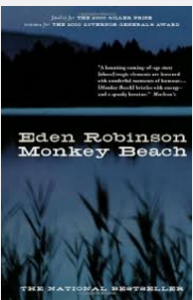
Robinson, Eden. Monkey Beach. Toronto : Vintage Canada, 2001, c2000.
“Infused by turns with darkness and humour, this is a spellbinding voyage into the long, cool shadows of BC’s Coast Mountains, blending teen culture, Haisla lore, nature springs and human tenderness into a multilayered story of loss and redemption.” – CIP. Highly recommended novel for mature readers 14-years-old and up due to the subject matter. [Brothers; Family life; First Nations; Kitimat Region (B.C.); Missing persons]
* Smelcer, John. The Great Death. Henry Holt and Co., 2009.
Early in the twentieth century, two sisters, thirteen-year-old Millie and ten-year-old Maura, are the only survivors after an epidemic hits their Alaskan village and they have to trudge south through winter snows, struggling to survive and hoping to find someone still alive. “Some stories are too big to be told all at once, even if they seem small. Largeness of story has nothing to do with the length of each word or of each sentence or with the number of pages, but with the capacity of the heart, which can take only so much” (3). (Alaska; Sisters; Survival; Extreme environments; Orphans; Historical fiction; Voyages and travels; Death; Epidemics)
* Smelcer, John. The Trap. Square Fish, 2006.
Seventeen-year-old Johnny Least-Weasel worries about his grandfather, Albert Least-Weasel, who is struggling to survive an Alaskan winter after being caught in his own steel trap. Recommended for readers in grades 7 – 12.
PICTURE BOOKS
** Alexie, Sherman. Thunder Boy Jr. New York: Little, Brown and Company, 2016.
Thunder Boy does not want to be named after his father. He wants his own name, a unique name. The memorable illustrations by Yuyi Morales and the large font help tell this wonderful story highly recommended for everyone.
Andrews, Jan. Very Last First Time. Groundwood Books, 1985.
Baylor, Byrd. Everyone Needs a Rock. Scribner, 1974.
Baylor, Byrd. I’m In Charge of Celebrations. Scribner’s, 1986.
Baylor, Byrd. The Way to Start a Day. Simon & Schuster Children’s Pub., 1986.
Blades, Ann. A Boy of Tache. Tundra Books, 1973.
Bouchard, David and Shelley Willier. The Drum Calls Softly. Red Deer Press, 2008.
The story of celebrating the round dance is told in English and Northern Cree. Paintings by Jim Potras help to make this a powerful picture book for readers 9-years-old and up. A bilingual audio CD accompanies the book.
Bouchard, David. The Elders are Watching. Raincoast Books, 1997.
Bouchard, David. I Am Raven. MTW Publishers, 2007.
Bouchard, David. Nokum is My Teacher. Calgary: Red Deer Press, 2006.
A boy and his grandmother talk about life for aboriginal people. Written as a partly rhyming dialogue in English and Cree and illustrated by Allen Sapp. Accompanied by a CD of singing and drumming by Northern Cree.
Bouchard, David. Qu’appelle. Raincoast, 2002.
Bouchard, David.The Secret of Your Name: proud to be Métis = Kiimooch ka shinikashooyen : aen kishchitaymook aen li michef iwik. Calgary: Red Deer Press, 2009.
Paintings by Dennis J. Weber illustrate poetry in English and Michif about the history of the Métis people of Canada. A bilingual audio CD is included.
Bouchard, David. The Song Within My Heart. Raincoast Books, 2002.
Brownridge, William Roy. The Moccasin Goalie. Orca, 1996.
Bruchac, Joseph. Between Earth & Sky: Legends of Native American Sacred Places. San Diego: Harcourt Brace & Co., 1996.
“Through the guidance of his uncle and the retelling of various Native American legends, a young boy learns that everything living and inanimate has its place, should be considered sacred, and given respect.” – CIP. Full-page paintings by Thomas Locker illustrate this collection of narrative poems recommended for readers 8 years old and up.
Bruchac, Jospeh & James Bruchac. Raccoon’s Last Race: a Traditional Abenaki Story. New York: Dial Books for Young Readers, 2004.
“Tells the story of how Raccoon, the fastest animal on earth, loses his speed because he is boastful and breaks his promises.” – CIP. This picture book would have benefitted from a larger size of text. But the smoothly flowing story by a well-known author and the brightly-coloured illustrations by award-winning artists Jose Aruego and Ariane Dewey overcome this minor design flaw. Highly recommended as a read-aloud for children 6 to 14 years old.
Campbell, Nicola I. A Day with Yayah. Vancouver: Tradewind Books, 2017.
Nikki and her loving grandmother set out to spend the day gathering plants out on the land. Jamesie, Lenny, Grand-auntie Susan and Grand-uncle Chester join them as they search for wild rhubarb and potatoes, wild celery and sunflowers, and golden brown lightning mushrooms. Giving thanks to the Creator for the gift of food, they collect their discoveries and settle down for a picnic of salmon sandwiches and hot sweet tea. Set in the Nicola Valley of British Columbia, this heart-warming story illustrated by Julie Flett is made more powerful by the inclusion of words from the Nłeʔkepmxcin language. A glossary at the end provides both definitions and a pronunciation guide, and an afterward provides information about this Interior Salishan group of indigenous people. Most highly recommended for readers of all ages.
Campbell, Nicola. Granpa’s Girls. Toronto: Groundwood Books, 2011.
Gentle illustrations by Kim LaFaye accompany this story of a young girl’s loving relationship with her grandfather and her adventures on his farm. Dedicated to her own grandfather, an aboriginal war veteran of WW2, Campbell has written a happy story based on memories of her own childhood. A few words in the language of the Interior Salish people are smoothly inserted into this picture book, making it all the more realistic and endearing. Highly recommended for all readers and prospective storytellers 7-years-old and up. [Farm life; Veterans]
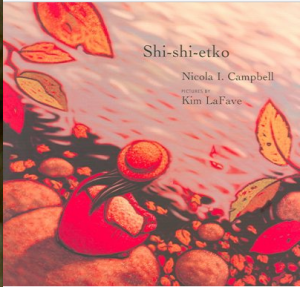
** Campbell, Nicola. Shi-shi-etko. Groundwood, 2005.
A little girl is taught by her mother, father and grandmother how to remember her home and her culture before she is taken away on a cattle truck to residential school. Astonishingly beautiful illustrations accompany this story full of five senses details. (A lesson plan: Shi-shi-etko)
* Campbell, Nicola. Shin-chi’s Canoe. Groundwood, 2008.
Two young children remember their home and learn how keep their spirits alive when they are sent to a residential school. The quiet tone and the vivid illustrations combine to create a powerful account.
*Campbell, Nicola I. Stand Like a Cedar. Winnipeg, Manitoba: Highwater Press, 2021.
Spring. Summer, Autumn. Winter. Walking through the woods, children learn about nature and all it has to teach us. Written in English, Nłe7kepmxcín, and Halq’emeylem – and accompanied by a glossary and pronunciation guide – this quietly respectful and life-affirming picture book will provoke reflection and encourage gratitude. Highly recommended for readers 7 years old and up. (P.S.: All stories by Nicola Campbell are worth reading. All gently encourage empathy and celebrate nature.)
* Cooper, Ilene. The Golden Rule. Abrams Books for Young Readers, 2007.
A grandfather explains to his young grandchild how the golden rule is part of Christianity, Judaism, Buddhism, Islam, Hinduism and the Shawnee Native American tradition.
Einarson, Earl. The Moccasins. Penticton, B.C.: Theytus Books, 2004.
An extraordinarily loving story – based on the author’s own experiences – about a little boy whose foster mother gives him a pair of beaded moccasins to wear indoors. Many years later, when he is grown up and has a child of his own, his foster mother brings him a gift: his childhood moccasins that she’d carefully saved for him. Quietly and gently illustrated by Julie Flett, this picture book will be enjoyed by young children and treasured by adults.
P.S. After reading it, think about what it is you treasure and want to safely store for the future.
P.P.S. After reading it, think about what makes you feel “warm and loved.”
Flett, Julie. Birdsong. Vancouver, BC: Greystone Kids/Greystone Books, 2019.
A young Cree girl moves to a new home in the countryside where she makes a new friend, an elderly woman who shares her love of art. Passing through the seasons of the year, this wistful picture book is filled with quiet love. It can take its place along with Miss Rumphius by Barbara Cooney as a story for readers who appreciate the power of creativity. [Art; Friendship; Moving, Household; Seasons]
Flett, Julie. We All Count: a Book of Cree Numbers. Vancouver, BC : Native Nortwest.com, 2018.
Flett, Julie. We All Play. Vancouver: Greystone Kids, Greystone Books, 2021.
* Flett, Julie. Wild Berries = Pikaci-Minisa. Vancouver: Simply Read Books, 2013.
A simple story told in present tense in English with some key words in Cree, wonderful as a read-aloud and useful for a lesson on descriptive writing. The elegant design of the book – the font, the illustrations, the layout – and the musical flow of the words combine to make this a picture book for all ages.
Florence, Melanie. Missing Nimâmâ. Richmond Hill, Ont.: Clockwise Press, 2015.
Over 1000 indigenous women were murdered or went missing in Canada between 1980 and 2012. This haunting story of a child whose mother has been killed is told to honour their memory. It is written in alternating voices – a little girl and her mother – with some words in Cree. Although the font is a bit hard to read, this story of grief is nevertheless recommended for readers 11-years-old and up.
Florence, Melanie. Stolen Words. Toronto: Second Story Press, 2017.
What did you call your grandfather when you were very young? Grandpa? Opa? Papi? Baba? How does hearing the words of your early childhood affect your memories? Your emotions?
A little girl asks her grandfather what to call him in Cree. He doesn’t know. He was sent to residential school when he was young and his language was taken away. So she goes to her school library and comes home with a book: Introduction to Cree. Together, they learn the language of their culture. This gently powerful picture book – illustrated by Gabrielle Grimard – is highly recommended for readers of all ages.
George, Jean Craighead. Nutik and Amaroq Play Ball. HarperCollins, 2000.
George, Jean Craighead. Nutik, the Wolf Pup. HarperCollins, 2001.
Goble, Paul. The Girl Who Loved Wild Horses. Aladdin Books, 1993.
Goble, Paul. Storm Maker’s Tipi. Atheneum Books for Young Readers, 2001.
* Gray Smith, Monique. My Heart Fills with Happiness. Victoria, BC: Orca Book Publishers, 2016.
Gray Smith, Monique. You Hold Me Up. Victoria, BC: Orca Book Publishers, 2017.
What does it mean to be an encouragement to others? This thoughtful picture book – colourfully illustrated by Danielle Daniel – provides the answer in simple yet profound sentences perfect for listeners and readers four to eight years old. Highly recommended, as well, for parents and grandparents. A story sure to start a conversation about what it means to be part of a family.
* Griese, Arnold. Anna’s Athabaskan Summer. Boyds Mills Press, 1995.
A young girl accompanies her parents and grandmother to their summer fish camp in this gentle story suitable for grades one to four. (Summer; Grandmothers; Family life; Salmon; Alaska; Seasons; Camps)
Harrison, Ted. A Northern Alphabet. Tundra, 1982.
Highway, Tomson. Caribou Song. HarperCollins, 2001.
Highway, Tomson. Fox on the Ice. HarperCollins, 2003.
Hobbs, Will. Beardream. Aladdin Paperbacks, 2000.
When Short Tail climbs into the mountains to find the Great Bear, he tires and slips into a dream in which the Great One reveals a marvelous secret.
Holling, Holling Clancy. Paddle-to-the-Sea. Houghton Mifflin, 1941.
Jameson, Catherine. Zoe and the Fawn. Penticton, British Columbia: Theytus Books, 2019.
Joe, Donna. Salmon Boy: A Legend of the Sechelt People. Nightwood Editions, 2001.
Johnson, E. Pauline. The Lost Island. Simply Read Books, 2004.
* Jordan-Fenton, Christy and Margaret Pokiak-Fenton. Not My Girl. Toronto: Annick Press, 2014.
Olemaun has been at school and away from home for two years. Now 10 years old, she returns to discover she no longer belongs in her Inuit village. But slowly, slowly, she relearns the ways of her people and regains her sense of belonging. Illustrations by Gabrielle Grimard help this story that will appeal to many readers who will be ready to tell their own stories of going away and coming home again. The flowing style of writing makes this an excellent read-aloud. Previously published as ‘A Stranger at Home’; highly recommended for all readers 8-years-old and up.
* Jordan-Fenton, Christy and Margaret Pokiak-Fenton. When I Was Eight. Toronto: Annick Press, 2013.
Kusugak, Michael Arvaarluk. My Arctic 1, 2, 3. Annick Press, 1996.
Kusugak, Michael. Baseball Bats for Christmas. Annick Press, 1990.
LeBox, Annette and Karen Reczuch. Salmon Creek. Toronto: Groundwood Books, 2002.
“A story about the life cycle of the wild Pacific salmon. Includes information on working to preserve their disappearing environment.” – CIP.
Lewis, Paul Owen. Frog Girl. Whitecap, 2001.
Lewis, Paul Owen. Storm Boy. Whitecap, 1997.
The Lonely Inukshuk. Scholastic Canada, 1999.
Written and illustrated by students of Inuglak School, Whale Cove, Nunavut, the text is in English with an Inukitut translation.
MacGill-Callahan, Sheila. And Still the Turtle Watched. Dial Books for Young Readers, 1991.
Martin, Bill, Jr. Knots on a Counting Rope. Fitzhenry & Whiteside, 1966.
A grandfather tells stories about his grandson’s birth, his first horse, and an exciting horse race. Useful for teaching theme and conversation in writing. Illustrated by Ted Rand.
* Martin, Rafe. The Rough-Face Girl. G.P. Putnam’s Sons, 1992.
An Algonquin version of the Cinderella story.
McDermott, Gerald. Coyote: : A Trickster Tale from the American Southwest. Harcourt, 2001.
McDermott, Gerald. Raven: A Trickster Tale from the Pacific Northwest. Voyager Books Harcourt, 2001.
Minnema, Cheryl. Johnny’s Pheasant. Minneapolis: University of Minnesota Press, 2019.
Munsch Robert. A Promise is a Promise. Annick Press, 1998.
Olsen, Sylvia. Yetsa’s Sweater. Sono Nis Press, 2006.
Yetsa, her mother and grandmother gather sheep fleeces on a spring day to clean and knit into Cowichan sweaters. A story about the Coast Salish people.
Ritchie, Scot. P’ésk’a and the First Salmon Ceremony. Toronto: Groundwood Books/House of Anansi Press, 2015.
This story of the Sts’ailes (Chehalis) people on the Harrison River in British Columbia is set one thousand years ago and includes a glossary, a letter from Chief William Charlie, and additional historical information. Useful for readers wanting to learn more about the first people of the Fraser Valley.
* Robertson, David A. On the Trapline. Plattsburgh, New York: Tundra Books of Northern New York, 2021.
* Rylant, Cynthia. Long Night Moon. New York: Simon & Schuster Books for Young Readers, 2004.
Names tell stories. And in this poetic picture book, Rylant lyrically describes the name for each month’s moon. November has a Frosty Moon. February has a Snow Moon. June has a Strawberry Moon.
All these names were given to the moon long ago by Native Americans. In Canada nowadays, we would say aboriginal people or indigenous people. These names for the first people of North America tell their own stories.
What is your name? What story does it tell?
This picture book creates a wonderful opening for all sorts of discussions. And the evocative full-page charcoal, pencil and pastel illustrations by Mark Siegel will inspire all sorts of art work in readers 6 years old and up.
Salonen, Roxane Beauclair. First Salmon. Honesdale, Pa.: Boyds Mills Press, 2005.
“During the ceremony of First Salmon, an event celebrated by the Northwest Pacific tribes to honor and welcome back the salmon each year, Charlie remembers his beloved uncle and starts the process of accepting his death.” – FVRL. A picture book recommended for readers 8 to 12 years old.
Sammurtok, Nadia. To My Panik: To My Daughter. Iqaluit, Nunavut: Inhabit Media, 2022.
A mother lovingly tells her daughter how much she loves her. Her eyes that look like warm flames in a stone lamp. Her ears that listen like a mother bear caring for her cubs. Her lips, her voice, her personality, and her sense of humour. All are described with comparisons to features in their Arctic environment. This inspiring picture book – illustrated by Turkish artist Pelin Turgut – is most highly recommended for children three to seven years old and for parents of all ages.
San Souci, Robert. Sootface: An Ojibwa Cinderella Story. Dragonfly, 1994.
* Simpson, Carol. Brothers of the Wolf. Victoria, BC: Heritage House Publishing, 2014.
* Simpson, Caroll. The First Beaver. Surrey, B.C.: Heritage House, 2008.
In the Pacific Northwest long ago, a child was born to the First People. She was different than anyone else. This Tsimshian story, wonderful for reading aloud, is followed an explanation of twelve different crests of First Nations people. Highly recommended.
* Simpson, Caroll. The First Mosquito. Surrey, B.C.: Heritage House, 2010.
In this story of the Pacific Northwest, a mother protects her young son from danger. At the end is an illustrated guide to 12 supernatural creatures common in aboriginal stories. And in an afterword, the author explains that she combined elements of many legends to create a story to help readers gain a better understanding of the people who lived here long before the arrival of Europeans. Highly recommended.
* Simpson, Caroll. The Salmon Twins. Surrey, B.C.: Heritage House, 2012.
In another story of the Pacific Northwest, twins are born. But they do not get along together. Only after they are turned into a two-headed serpent do they give up their greed and learn to work together. At the end of the book, an illustrated guide explains 11 images and 11 sea plants and animals important to First Nations people. In the afterword, the author explains that she combined elements common to aboriginal people to once again create her own story. Highly recommended.
Spalding, Andrea. Secret of the Dance. Orca, 2006.
A nine-year-old boy watches dancing masked figures during his family’s forbidden potlatch in Kingcome Inlet in 1935. A story of the Kwakuitl people of the northwest coast of N.A.
* Spalding, Andrea. Solomon’s Tree. Orca, 2002.
A young Tsimpsian boy learns about the cycle of life when his uncle teaches him how to carve a mask using wood from a maple tree uprooted by a storm.
Spathelfer, Teoni. White Raven. Victoria: Heritage, 2021.
Little Wolf moves with her husband and three daughters to a peaceful island home where they enjoy living by the seashore and exploring in the forest. When Little Wolf’s mother, White Raven, comes to visit, the girls learn about their grandmother’s childhood in a residential school. Based on the author’s own mother’s early experiences at a residential school in Alert Bay, B.C., this picture book is one of the most detailed in its depiction of life for indigenous children. It focuses on facts: children had their heads shaved and covered with DDT; the food given to them was often mouldy and bug-ridden; sausages were served raw; toilet paper was sometimes eaten to appease the constant hunger; nights were filled with the sounds of children crying; if they spoke their own language, their mouths were washed out with soap; they were always called by number. However, the story also mentions the kindness of one of the teachers, Mrs. Oak, who cared for White Raven when she was ill and sewed her a new dress.
The format of this book – brightly coloured illustrations and a relatively large font with widely spaced lines of print – makes it ideal for reading aloud. The sentence structure is straight-forward and well-suited for readers eight to ten years old. The factual details make it excellent as a research resource for students nine to twelve years old. Therefore, while discretion should be used in presenting this picture book to very young readers, it is highly recommended for both elementary and middle school libraries.
Steptoe, John. The Story of Jumping Mouse: A Native American Legend. Lothrop, Lee & Shepard Books, 1984.
Swanson, Bruce. Gray Wolf’s Search. Toronto: Second Story Press, 2007.
While a little awkwardly written, this picture book is nonetheless recommended for its life-affirming message that everyone is important. Softly coloured illustrations by Gary Peterson enhance this story of the Pacific Northwest.
Taylor, C.J. The Messenger of Spring. Tundra Books, 1997.
* Toye, William. How Summer Came to Canada. Oxford, 1969.
A classic folktale with illustrations by Elizabeth Cleaver.
Toye, William. The Loon’s Necklace. Oxford, 1977.
Another classic folktale with illustrations by Elizabeth Cleaver.
Van Camp, Richard. A Man Called Raven. Children’s Boo Press, 1997.
Van Camp, Richard. What’s the Most Beautiful Thing You Know About Horses? Children’s Book Press, 1998.
** Vickers, Roy Henry and Robert Budd. Cloudwalker. Madeira Park, B.C. : Harbour Publishing, 2014.
A legend of the Gitsan people of the Pacific northwest coast of N.A. which is recommended for readers eight-years-old and up.
** Vickers, Roy Henry and Robert Budd. Orca Chief. Madeira Park, B.C.: Harbour Publishing, 2015.
The importance of respect is the theme of this legend of the Tsimshian people of the Pacific northwest coast of N.A. It is recommended for readers eight-years-old and up.
** Vickers, Roy Henry and Robert Budd. Peace Dancer. Madeira Park, B.C.: Harbour Publishing, 2016.
Another legend of the Tsimshian people of the Pacific northwest coast of N.A. A flood story recommended for readers eight-years-old and up.
** Vickers, Roy Henry and Robert Budd. Raven Brings the Light. Madeira Park, BC: Harbour Pub., 2013.
This complex and powerful legend from the Tsimshian people of the Pacific northwest coast of N.A. is recommended for readers nine-years-old and up. An excellent read-aloud and useful for teaching cross-cultural connections. Observant readers will notice similarities to the story of Jesus coming to earth.
Waboose, Jan Bourdeau. Firedancers. Stoddart Kids, 1999.
* Whetung, James. The Vision Seeker. Markham, Ont.: Fitzhenry & Whiteside, 2011, c1996.
A story of the origin of the sweat lodge of the Anishinaabe (Ojibwa) people in which a vision seeker meets seven grandfathers who give him gifts: knowledge, love, honesty, strength, bravery, respect, and humility. High recommended for readers – and listeners – eight-years-old and up.
Williams, Maria. How Raven Stole the Sun. Abbeville Press, 2001.
Wisniewski, David. The Wave of the Sea-Wolf. Clarion Books, 1994.
* Yerxa, Leo. Ancient Thunder. Groundwood Books, 2006.
The full-page illustrations – collages – are stunning in this poetic song of praise to horses. The unique use of language could be used with older students to discuss how syntax can reflect philosophical thought.
* Zeman-Spaleny, Linda. Lord of the Sky. Toronto: Tundra Books, 2009.
Based on an animated short film, this legend tells how the Great Raven brought the sun to the people of the Pacific Northwest. A redemption story recommended for thoughtful readers who enjoy comparing folktales and myths.
FOLKLORE COLLECTIONS
Bruchac, James. The Girl who Helped Thunder and other Native American Folktales. New York : Sterling Pub., 2008.
Galat, Joan Marie. Dot to Dot in the Sky: Stories of the Aurora. Vancouver: Whitecap, 2016.
Folktales from the Inuit, Norse, Greek, Alonquin, and Mi’kmaq people are interspersed with scientific information about the Northern Lights. Useful for teachers or independent readers 11 years old and up.
Galat, Joan Marie. Dot to Dot in the Sky: Stories of the Moon. Vancouver: Whitecap, 2004.
Folktales from the Chinese, English, Japanese, Greek, Russian Saami ,West African, Korean, and Mi’kmaq people are supplemented by scientific facts about the moon. Useful for teachers or independent readers 11 years old and up.
Taylor, C.J. All the Stars in the Sky: Native Stories from the Heavens. Toronto: Tundra Books, 2006.
Short stories of the Ojibwa, Salish, Blackfoot, Inuit, Wasco, and Cherokee people..
BIOGRAPHIES
* Bruchac, Joseph. A Boy Called Slow: The True Story of Sitting Bull. Philomel Books, 1994.
* Bruchac, Joseph. Jim Thorpe’s Bright Path. New York: Lee & Low Books, 2004.
Jim Thorpe is considered one of the most important American athletes in the 20th century. Over the course of his long career, he set records and won awards in many sports including football, baseball, track and swimming. This picture book biography of an aboriginal American from Oklahoma is highly recommended for readers 9-years-old and up.
Fournel, Kelly. Great Women from our First Nations. Toronto: Second Story Press, 2007. Ten indigenous women from Canada and the U.S.A. are featured in this collection of inspiring biographies. The writing style is engaging and easily accessible. Many of the chapters start with intriguing topic sentences: “It’s no secret that life can be hard and people are often cruel” (21); “You never know where life will take you when you consistently work hard at something you love” (29); “Remaining positive about life is a gift you can give to yourself” (35); “Living your life so that you feel good about who you are often tough to do” (43). Highly recommended for readers 10 years old and up. Part of a series: First Nations Books for Young Readers.
Kusugak, Jose Amaujaq. On the Side of the Angels. Iqaluit, Nunavut: Inhabit Education Books Inc., 2020.
How do you explain life to yourself when you are suddenly – and inexplicably – thrust into a foreign culture? How do you make sense of all the changes?
Jose Kusugak – in this nonfiction narrative – tells the story of his childhood. A carefree Arctic life playing games with siblings and trying to figure out the strange stories told by the Catholic Church. A confusing life in residential school where horrors mixed with happy events. This straight-forward account is unique in showing – in straightforward language – a child’s view while simultaneously providing an adult’s perspective.
While catalogued as a children’s book, some of the references might be too graphic for young readers. Some of the references to Bible stories might be puzzling to readers unacquainted with Christianity. Nevertheless, at only 54 pages in length and printed in a relatively large font, this matter-of-fact and even occasionally humorous autobiography is highly recommended for discriminating readers eleven years old and up.
Loyie, Larry. As Long as the Rivers Flow. Groundwood Books 2002.
Larry Loyie – of the Canadian Cree people – was sent to a government school and later became a writer. Recommended for readers nine to eleven years old.
Sigafus, Kim and Lyle Ernst. Wisdom from Our First Nations. Toronto: Second Story Press, 2015.
Biographical profiles of 12 indigenous elders from Canada and the U.S.A. including author Jacqueline Guest. Highly recommended for readers 11 years old and up. Includes a glossary and lengthy list of additional resources. Part of a series: First Nations Books for Young Readers.
Schilling, Vincent. Great Athletes from our First Nations. Second Story Press, 2007.
Rumford, James. Sequoyah: The Cherokee Man Who Gave His People Writing. Boston: Houghton Mifflin Co., 2004.
Cherokee uses 84 symbols or signs to make all the sounds of the language. This writing system was invented by a man called Sequoyah who lived over 150 years ago. Full-page colour illustrations and a Cherokee translation by Anna Sixkiller Huckaby accompany this compelling true story told by award-winning James Rumford. Highly recommended for readers of all ages.
* Winters, Nellie. Reflections from Them Days: A Residential School Memoir from Nunatsiavut. Iqaluit, Nunavut: Qinuisaarniq, an imprint of Inhabit Education Books Inc., 2020.
In 1949, when Nellie was eleven years old, she was sent to boarding school in Nain, Labrador on the east coast of Canada. In this 51-page autobiography, transcribed and edited by Erica Oberndorfer, she matter-of-factly shares her memories – both sad and happy, heart-breaking and humorous – in a voice truly her own. In the forward, she explains that we are all on earth to help each other and make our world “more wonderful.” This true story – illustrated by the author – will help readers see another life, another perspective, from a time not so long ago in Canada’s history. Highly recommended for readers 10 years old and up.
NONFICTION
Bouchard, David. Seven Sacred Teachings of White Buffalo Calf Woman = Niizhwaaswi aanike’iniwendiwin : waabishiki mashkode bizhikiins ikwe. North Vancouver, B.C. : MTW Pub., 2009.
An illustrated book and DVD in English and Ojibwe for readers 11-years-old and up. Recommended for readers doing research projects or expanding their general knowledge.
Corrigan, Kathleen. First Nations and Early Explorers. North Mankato, Minn.: Capstone, 2016. [Part of the Canada Through Time series recommended for readers 8 years old and up.]
Eboch, M.M. Salish Community. Collingwood, Ont.: Beech Street Books, 2017.
A 24-page large print book describing the life of B.C’s and Washington State’s Salish people in the past and today. A map, glossary, index, and list of suggested books and websites is included. The four short chapters and full-page coloured photographs will appeal to young readers learning how to do research projects or seeking to expand their general knowledge. While the tone of the writing sometimes minimizes controversial issues, this well-designed book is nevertheless recommended for readers 7 to 10 years old. (It could also be used with older students to analyze how style affects the tone of writing.)
Other books in the series include Cree Community, Huron-Wendat Community, Iroquois Community, Metis Community, and Ojibwe Community.
*Gray Smith, Monique. Speaking Our Truth: A Journey of Reconciliation. Victoria, BC: Orca, 2017.
A Canadian book about reconciliation with chapters focusing on honesty, love, kindness, and reciprocity. Stories of indigenous people, explanations of current political negotiations, and historical information combine to create a highly readable life-affirming book recommended for all ages. Supplemented by a glossary, online and print bibliography, list of residential schools in Canada, and an index. If you can purchase only one book, buy this one!
Paleja, S.N. Native Americans: A Visual Exploration. Vancouver: Annick Press, 2013. [A fascinating collection of illustrated facts highly recommended for all readers 10 years old and up.]
Peppas, Lynn. The Displacement of Native Peoples. New York: Crabtree Publishing, 2016.
Numerous primary sources about aboriginal people of Canada and the U.S.A. are used to teach historical research skills. A timeline, bibliography, guide to internet research, glossary, and index complete this 48 page book highly recommended for competent readers 12 years old and up.
- History is a collection of primary sources.
- Primary sources provide first-hand information.
- Secondary sources use primary sources to provide conclusions or offer opinions.
- Sources created closer in time to historical events are generally considered more reliable.
- Every source has an opinion or bias.
Samatte, Sandra and Susan Lam. Grandmother, What are the Seven Teachings? Winnipeg, MB : Native Reflections, 2010.
A board book recommended for all ages as an introduction to indigenous beliefs.
[Disclaimer: MsRosenReads is not responsible for the availability or content of these sites.]
Click HERE for lessons on the importance of oral storytelling among aboriginal people.
Click HERE for links to educational sites about indigenous people of Canada.
